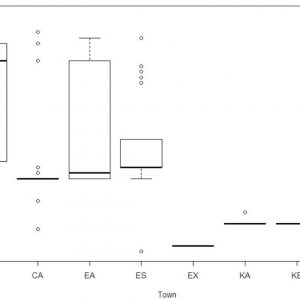Setting targets is a common way for organisations to establish performance expectations. However the validity of targets is challenged when performance is influenced by factors beyond the control of the manager. This project examines the issue of target setting for a single asset performance measure across different geographical areas. The performance measure is “Wastewater Blockages per 100km” at the Water Corporation. Factors relating to these blockages are examined for eight operating locations with quite different characteristics. A generalised linear regression has been developed to determine the influence of age, pipe type, network length, population, rainfall as well as costs associated with capital investment, preventative and corrective maintenance on blockages. Results show that pipe type and population density significantly impact blockage rates and this can be used to develop an understanding of how different districts might perform.
Outputs from the linear regression have been used to simulate blockage performance for performance insight in future years. Having the ability to predict district performance means there is an opportunity to prioritise investment decision-making on a more local level. One key result is that there is no relationship inside a district between management-controlled activities such as preventative maintenance and blockages. Another is that approximately 60% of the blockage performance variation in the sample is explained by asset design decisions and environmental factors, not by the efforts of maintenance.
There is a peer-review published paper on this work available
Green, D., Masschelein, S., Hodkiewicz, M., Schoenmaker, R. and Muruvan, S., 2016. Setting targets in an asset management performance measurement framework. In Proceedings 2016 World Congress on Engineering Asset Management (WCEAM2016), Jiuzhaigou.


